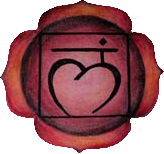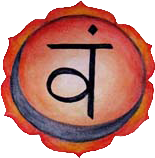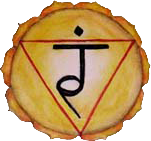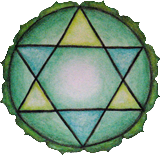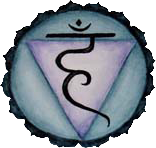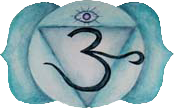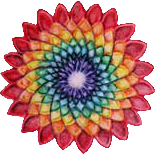What if the most powerful force for energizing all Yoga practices were as obvious and visible as the Sun? The fact is that it is. The Sun, properly understood not merely as an outer but as an inner energy source, reflects the supreme light of Yoga both in our own hearts and in the world of nature around us.
The Sun is obviously the most powerful influence in nature, responsible for the light through which all life on Earth functions as well as sustaining the force of gravity through which the Earth revolves. The Sun is the ruler or cosmic lord behind our solar system and all that occurs within it. Yet though we all may welcome the sunlight every day, we seldom consider the spiritual reality of the Sun or honor the sacred presence and higher spirit behind it. We take the sunlight for granted or value it for providing us better health or an alternative energy source!
However, if we look at traditional and ancient cultures from throughout world, we discover a strong awareness of the Sun as a spiritual force, and as great symbol and a secret doorway to a higher reality. We note extensive religious, spiritual, yogic, astrological and shamanic traditions that revere the Sun in various ways and also seek to understand the wisdom and grace behind its outer form, intuiting through the Sun the supreme force behind all existence.
The Sun is the most visible representation of the deity, the veritable “Face of the God” as the ancient Vedas eloquently state. The Sun is no mere luminous material globe or light in the outer sense, but the source of life, intelligence, love, and consciousness: light in the inner sense as well. Throughout the ancient world, continuing in some areas down to present day, we find a worship of the Sun as part of a greater religion or spiritual path of light, enlightenment and Self-realization. This solar religion or solar dharma generally occurs along with a cult of the sacred Fire and the mystic Moon and other aspects of light, and as part of a worship of nature as a whole and of the cosmic mind.
A religion of the Sun predominated among the ancient Egyptians, Persians, Hindus, and Scythians, to name but a few, extending to the Aztecs, Mayas, Incas and Pueblo Indians of the New World. Ancient Pre-Christian European traditions of the Greeks, Romans, Celts, Germans and Slavs, contain a strong solar symbolisms as well. Even later monotheistic approaches like Judaism, Christianity and Islam contain if not a solar symbolism, at least a symbolism of light. There is also a strong solar symbolism in Zoroastrianism, Buddhism and Shinto and many other spiritual traditions too numerous to mention quickly. Such spiritual teachings usually link the human being to the Sun and make us into children of the Sun, forms of light on Earth taking birth to fulfill the solar will towards greater light and consciousness. We could say that the natural religion and of our species is that of the Sun.
The question has been raised whether this ancient solar symbolism reflects a deeper spiritual practice like Yoga or merely reflects the prominence of the Sun’s influence in the world of nature. While some scholars downplay the spiritual implications of ancient solar cults, as we begin to better understand and appreciate native traditions, it is becoming more and more clear that there is something deeply mystical behind the ancient worship of light, and that it is not simply a primitive nature worship. Earlier humanity was probably more spiritual than our current humanity owing to its ability to connect with the inner Divine light behind the great illuminating power of the Sun. This ancient path of light beckons us both from the future as well as the past, as the ecological age dawning today requires that we honor the sacred and Divine presence in nature, especially in the Sun.
The Vedic Religion of the Sun and Light
The Vedas, with which classical Yoga is closely connected, are based upon a solar symbolism as a religion of light and of the Sun. The Sun is the supreme deity of the Vedas, the Divine power in Heaven, which functions in the Atmosphere as Lightning and on Earth as Fire, which are the three main manifestations of light in our visible world. The Vedic ritual, which is the main outer Vedic practice, involves making offerings to a sacred fire in order to connect with the beneficent powers of the solar deity. The Veda says that we are all children of the Sun born on Earth to carry forward the Divine light of truth. The Vedas laud the Sun as the source of life, intelligence and consciousness within us and as the very core of our own being, with each soul being a spiritual sun of its own.
There are many forms of the Sun God in Vedic thought, which reflect various aspects of Dharma or cosmic law. Such include Surya(he who revolves and expands), Savitri (the transforming will), Aditya (primal intelligence), Mitra (the Divine Friend), Varuna (the Lord of the cosmic waters), Aryaman (the servant of Dharma), Bhaga (the giver of bliss), Pushan (the nourisher, seer and guide), Vishnu (the pervador), and Twashtri (the cosmic artist). In addition, the Vedas contain an entire group of Sun Gods called Adityas said to be twelve in number. The other main deities of the Veda as Agni (Fire), Soma (Water), Indra (ruling power), all have strong solar aspects. The Vedic mantras themselves are said to dwell in the rays of the Sun. They are said to number 432,000, which is 360 X 1200, reflecting a solar mathematics of the zodiac.
The Gayatri Mantra
The Gayatri mantra to Savitri, an important form of the Sun God, is the most important of all Vedic mantras and one of the most commonly used mantras in Yoga practices. The Gayatri mantra is an important tool for drawing in the spiritual energy of the Sun into our minds, hearts and bodies, serving like a solar panel for the inner worlds.
We meditate upon the supreme light of the Divine transforming Sun (Savitri) that he may stimulate our intelligence.
Rigveda III.62.10
Vedic rituals, including Agnihotra and the chanting of the Gayatri mantra, occur at sunrise, noon and sunset, the main points of solar transformation throughout the day. The deity of this mantra, Savitri, represents the transformational power inherent in the Sun, not only to change night into day but also to take us beyond the darkness of the ego into the infinite light of the higher Self. Savitri is the deity of Yoga and meditation, who sets that process in motion within us as a manifestation of the Divine Will. Yet we should remember that this Gayatri is only one of hundreds of Vedic verses to the Sun that can be used in a similar manner. It is not at unique in the Vedas.
In the Upanishads there is an interesting section on Yoga that begins with mantras from the Vedas to Savitri.
- Yoking first the mind, having extended the intelligence, discerning the light of the Fire, Savitri brought it forth from the Earth.
- With a yoked mind, in the impulse of Divine Savitri, may we have the power to move into the realm of light.
- Having yoked the Gods by the mind, with the intelligence that reaches the realm of Heaven, creating a vast light, may Savitri direct that for us.
- Seers of the vast illumined seer yogically control their minds and their intelligence. The One knower of the ways of wisdom, he ordains the invocations of the gods. Great is the affirmative being of the Divine transforming Sun (Savitri).
Svetasvatara Upanishad II.1-4
Savitri represents the Divine light of awareness hidden within us that Yoga serves to activate in order to bring about the evolution of our consciousness beyond time and mortality. Here we see the seeds of Yoga explained in terms of a solar symbolism.
The Purusha or Higher Self as the Being in the Sun
Yoga and the Vedas are linked together by the common conception of the Purusha or Atman, the Supreme or Universal Self that is the goal of classical Yoga and the main subject of the Upanishadic teachings. The Purusha or Atman is often identified with the Sun both in older Vedic and later Yogic thought.
The Rishi Kutsa’s chant in the Rigveda is the Sun is the Self of the stable and moving world (RV I.114.1). The idea of union with the Sun occurs in several Vedic verses, to quote a few examples below.
Arising from the surrounding darkness, seeing the higher light, we have reached the Godhead, the Divine Sun, the supreme light.
Rigveda I.50.10
From my father, I have received the wisdom of truth. I was born even as the Sun.
Rigveda VIII.6.10
The great Upanishadic prayer is to merge into the Solar Self. The famous Isha Upanishad ends with a chant to merge in the solar Self, which also contains the oldest reference to the So’ham mantra. In fact, the great Hamsa or Swan of yogic thought is originally a Vedic Sunbird.
Sun, O nourisher, single seer, controller, power of the Lord of creation, remove your rays and gather up your heat that I may see your most auspicious form. The Purusha (Person) that is within the Sun, He am I (Yo’ sau Aditye Purusha, so-ham asmi).
Isha Upanishad 16
The Upanishads tell us that the Sun chants OM as it moves in the sky. The Sun is not only the source of light but that of sound and mantra as well. As such Mantra Yoga is also rooted in the worship of the Sun.
Thus indeed that which is the upward chant (udgitha), that is the primal sound (Pranava). That which is the primal sound, that is the upward chant. That which is the Sun (Aditya) beyond is the upward chant. He is primal sound. He chants OM as he moves.
Chandogya Upanishad I.5.1
The Sun and the Branches of Yoga
Relative to the ‘Yoga of Knowledge’ or Jnana Yoga, the inner Self or Atman has always been symbolized as the Sun, ever shining in the hearts of all. After introducing the famous mantra “I am Brahman” (aham brahmasmi) or “I am God,” the Upanishads quote (Brihadaranyaka Upanishad I.IV.10) a verse from the Rishi Vamadeva in the Rigveda which states, “I was Manu and the Sun.”
Relative to the ‘Yoga of Devotion’ or Bhakti Yoga the first and main images used in worship were that of the deity in the Sun disc,Surya-Narayana. This is the background of the ancient Vaikhanasa tradition of India, which is still followed in the famous temple of Tirupati in South India, the largest and wealthiest shrine in the country.
A strong solar symbolism enters into the great trinity of Hindu deities around which Bhakti Yoga revolves. Brahma, the Creator, has a solar aspect. Vishnu, the preserver, is often worshipped as the Sun, particularly as Surya-Naranaya, the Sun as the cosmic person who enters into the hearts of all beings. Shiva, the transformer, is honored as the supreme deity behind the Sun, particularly asRudra, who represents the highest, light and color of the Sun. In fact, Brahma, Vishnu and Shiva are often regarded as the three aspects of solar energy as creating, sustaining and transforming the universe.
The Solar Yoga of the Bhagavad Gita
Krishna himself in the Bhagavad Gita states that he taught the original Yoga first to Vivasvan, the Sun God, who passed it on to Manu, the primal human sage, who is called the son of the Sun. Krishna states:
I taught this imperishable Yoga to Vivasvan (the Sun God). Vivasvan taught it to Manu (the first king and law giver). Manu taught it to Ikshvaku (first king of the solar dynasty).
This Yoga was handed down in a continual lineage as the royal sages know. But after a long period of time, this Yoga has declined in this world.
Today I have spoken that same ancient Yoga to you, Arjuna, because you are my devotee and my friend, and it is the highest secret teaching.
Bhagavad Gita IV.1-3
Krishna is traditionally regarded as the Yogavatara or “incarnation of Yoga,” a status that is not afforded to any other human personage. This statement of Krishna also refers to the Vedic teaching that we as human beings are descendents of the Sun.Manu, the son of the Sun, is the first king, law giver and great yogi in this particular set of world-ages. From him originate both the great solar and lunar dynasties of kings, with Rama and Buddha hailing from the solar side, and Krishna and Arjuna from the lunar side. Curiously this statement of Krishna is similar to that of Vamadeva quoted earlier from the Rigveda stating he was Manu and the Sun. Krishna here relates to the royal sages or Rajarshis. There were other traditions of the priestly sages or Brahmarshis, also connected to the Sun.
The Solar Symbolism behind the Yoga Sutras
The traditional founder of Yoga Darshana or the ‘Yoga system of philosophy’ – which the Yoga Sutras of Patanjali represents – is usually said to be Hiranyagarbha, which means the “Golden Embryo” and is identified with the Sun. The Mahabharata (Shanti Parva 349.65), the great ancient text in which the Bhagavad Gita of Sri Krishna occurs and which is sometimes called the ‘fifth Veda‘, states: “Kapila, the teacher of Samkhya, is said to be the supreme Rishi. Hiranyagarbha is the original knower of Yoga. There is no one else more ancient.”
Elsewhere in the Mahabharata (Shanti Parva 342.95-96), Krishna states, identifying himself with Hiranyagarbha: “As my form, carrying the knowledge, eternal and dwelling in the Sun, the teachers of Samkhya, who have discerned what is important, call me Kapila. As the brilliant Hiranyagarbha, who is lauded in the verses of the Vedas, ever worshipped by Yoga, so I am also remembered in the world.” Elsewhere in the Mahabharata, Hiranyagarbha is said to have given his teachings on Yoga to Vasishta, the most famous of the rishis of the Rigveda, from a continual line of teachings existed, extending to Patanjali. Vasistha is also the source of a series of astrological teachings, which are most connected to his grandson Parashara.
Yajnavalkya, the Solar Guru of Yoga and Vedanta
Yajnavalkya is an important figure in both Vedanta and Yoga. He is the most famous of the Upanishadic sages, to whom most of theBrihadaranayaka, the longest of the older Upanishads is ascribed, and also the main seer of the Satapatha Brahmana, the most famous of the Brahmana (ritualistic) works. He is said to have received his Vedic mantras directly from the Sun God as Aditya.
Yajnavalkya appears as the teacher of the Yogi Yajnavalkya, probably the most important traditional text on Yoga after the Yoga Sutras, widely used in Vaishnava circles in India, including the Ramanuja line that Krishnamacharya was part of. The Yogi Yajnavalkyareflects a strong solar symbolism. It has extensive teachings on Om and the Gayatri mantra. The version of the text that I have (Brihad Yogi Yajnavalkya Smriti from Kaivalya Dham), states IX.88: “the Sun, the Self of the world, is the Prana placed in the heart.”
The Sun Salutation
Even relative to the asana side of Yoga, the Sun has a very important symbolism. The Sun salutation is probably the most important of all asanas, as it covers the largest range of bodily movements, energizing all our physiological systems and all the organs, spreading the solar light through all our limbs.
The Sun and Prana
Relative to the practice of Yoga, the Sun as Prana is a key to many Pranayama practices.
In the Maitri Upanishad VI. 1-3, the Sun is identified with Prana: “The Self bears himself in two ways. As Prana and as the Sun. Such are his two paths, outer and inner, that revolve by day and by night. The Sun is the outer Self and Prana is the inner Self. The movements of the inner Self (Prana) are measured by those of the outer Self (the Sun).” Our Prana is our inner Sun that marks our inner days and nights that follow a similar course as the outer days and nights.
This Upanishadic idea reflects older Vedic views. Yajnavalkya’s Satapatha Brahmana states that we have 10,800 breaths by day and night. This equals 720 breaths every 48 minutes (1/30 of a day), which he identifies with the general number of days and nights in a year. It amounts to one breath every four seconds. Our term of 21,600 breaths lasts for a life of 100 years. This means that we can make our lives longer by breathing longer and make our lives shorter by breathing more quickly.
In the yogic view of the subtle body, the right or solar (Pingala) nadi governs the movement of fire, heat and activity at a physiological level. The Sun is also present as the solar plexus fire in Hatha Yoga, as well as the Atman in Raja Yoga. The key to Pranayama is to draw in the Prana of both the inner and the outer Suns and regulate it towards transformation.
The Sun and Mantra
Chanting mantras in the sunlight, particularly along with standing in water and offering the mantras to the solar deity, is one of the most powerful of all Mantra Yoga practices and can be used with almost any mantra. It works particularly well with solar mantras like OM, Hrim or the Gayatri mantra. Sound is also light, so that we can use the Sun to energize all mantras. Hrim is the most important of the bija mantras said to carry the power of the Sun. But the solar energy is the root of all mantras.
The Sun in Tantric Yoga
In Tantric Yoga as in the Upanishads, the Sun at a deeper level, is identified with the heart, particularly the spiritual fire force of Shakti in the root chakra and the lunar or water force (Soma) of Shiva in the crown chakra unite in order to create it. Agni is the red point, drop or sphere (bindu) and Soma is the white bindu, which unite to create the Sun as the golden bindu.
The Sun and Meditation
One of the simplest and most important meditation techniques is to meditate upon the Supreme Self or Divine presence as the Sun within the heart, of which the mind and brain is but an outer reflection like the Moon. The Self is the Sun of suns, the Light of lights, and the supreme power of illumination.
The Sun in Modern Yogas
Relative to modern Yoga masters from India, Sri Aurobindo taught an integral Yoga of Self transformation through the Supramental light and Shakti, which he lauds under the symbolism of the Sun. Ramana Maharshi, the greatest of the sages or Jnana Yogis, speaks of the heart and the Self as the inner Sun.
The Sun and Vedic Astrology
Vedic astrology teaches us the importance of the Sun as the king of all the planets. It tells us that we should at least chant the name of the Sun. The Sun in the chart indicates the Self, Prana, father, king, leader, heart, occupation, influence, power and recognition.
The Sun and Ayurvedic Medicine
The Sun as the outer power of Prana is also important in Ayurvedic medicine. If we energize our drinking water with the sunrays it provides us with more prana and can impart additional healing energy to the herbs that we take with it. The Sun itself grants the power of longevity or Ayus.
Conclusion and Summary
In the dawning ecological age, we are once again recognizing the spiritual powers at work behind the forces of nature, the most important of which is the Sun. We need to cultivate the external Sun not only as an energy source, but the inner Sun as a source of inspiration and meditation. This once more provides us a world view in which we can appreciate the spiritual teachings not only the Vedas, Yoga and Tantra, but of all solar traditions of truth and enlightenment, which have counterparts all over the world and many of which are undergoing renewal.
The best ways to access this power of the spiritual Sun can be listed briefly:
- Perform the Sun Salutation particularly in the morning to the Sun, preferably honoring the different names of the Sun.
- Practice Prana Yoga or Pranayama, including alternate nostril breathing and honoring Prana as the inner Sun in the heart.
- Practice Solar or light based mantras, like Hrim, Gayatri, or the Hamsa Mantra.
- Use the sunlight to energize the water and the herbal beverages that you drink.
- Visualize God or the guru or whatever you are most devoted to as dwelling in the Sun of your own heart.
- Practice Self-inquiry or meditation upon the source of all light as the Self or pure I, the spiritual Sun within the heart.
The simplest thing to do is to greet the sun every day with the astrological mantra:
Om Sum Suryaya Namah!
There is nothing more obvious to us than the Sun and nothing with such an all-pervasive influence our lives. Yet we usually forget the spiritual splendor of the Sun living in its reflections. However, without honoring that inner Sun, our inner world is likely to be tainted with darkness, regardless of the condition of the outer world.
The ancient solar Vedic Yoga involves resurrecting the Sun out of darkness, which is the Sun of our own true Self hidden in the darkness of the material world and the ego-mind. Each one of us is a Sun, a universal light of consciousness, but that solar aspect of our being must be regained through the process of Yoga Sadhana, which is a return to the Sun.
May you awaken to your inner light that is the supreme light that pervades the entire universe.
